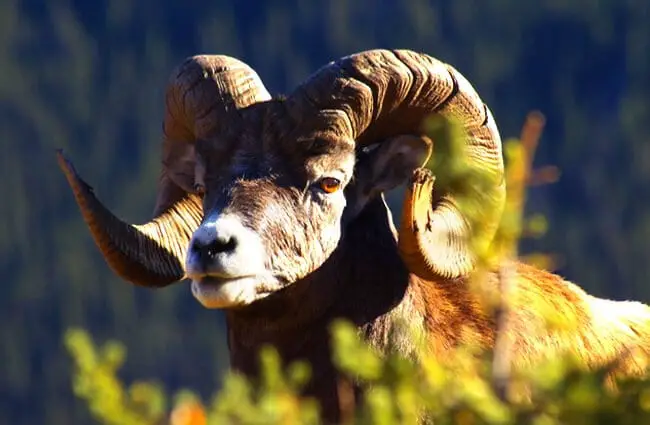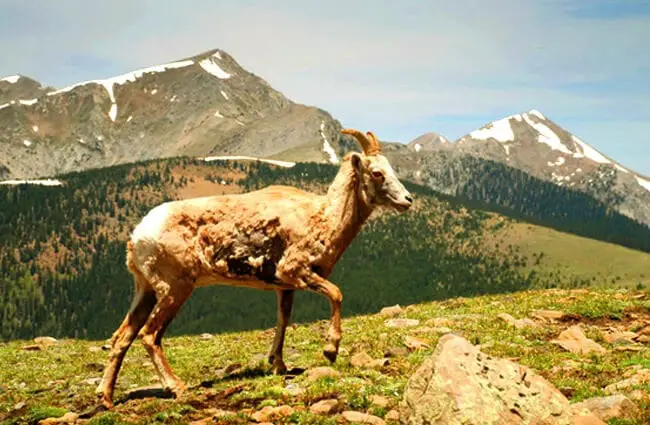Masters of the Peaks: A Comprehensive Look at Mountain Sheep
The rugged landscapes of North America are home to a truly remarkable animal – the mountain sheep. These sure‑footed ungulates, renowned for their impressive horns and incredible agility, are a symbol of wildness and resilience. This article delves into the fascinating world of mountain sheep, covering their biology, behavior, habitat, and interactions with both the environment and humans.

What are Mountain Sheep?
The term “mountain sheep” generally refers to three species: the bighorn sheep (Ovis canadensis), Dall sheep (Ovis dalli), and Rocky Mountain sheep (Ovis canadensis nelsoni – a recognized subspecies of the bighorn). Though similar, they exhibit distinct characteristics. Bighorn sheep are known for their massive, curling horns, particularly in males (rams). Dall sheep have smaller, more slender horns and a lighter, almost white coat. Rocky Mountain sheep combine large horns with a brownish‑gray coat. All are members of the Caprinae subfamily, which also includes goats and muskoxen.
Physical Characteristics
Mountain sheep are powerfully built animals, adapted for life on steep terrain. They possess strong legs, a compact body, and specialized hooves with a hard outer shell and a soft inner pad, providing excellent traction. Their thick coat protects them from harsh weather conditions. Rams, particularly bighorn, can weigh up to 300 pounds and stand over four feet tall at the shoulder. Ewes (females) are generally smaller.
Habitat and Distribution
As their name suggests, mountain sheep inhabit mountainous regions. Bighorn sheep occupy the rocky slopes and alpine meadows of western North America, from Canada to the southwestern United States. Dall sheep are found in the rugged peaks of Alaska and northwestern Canada. Rocky Mountain sheep reside in the Rocky Mountains of western North America. They prefer areas with steep slopes, cliffs, and grasslands, providing both protection from predators and access to forage.

Finding Mountain Sheep in the Wild
For those hoping to observe these magnificent creatures, patience and preparation are key. Focus on areas with exposed rocky slopes and alpine meadows. Early morning and late evening are often the best times to spot them as they move to and from feeding grounds. Bring binoculars or a spotting scope for a better view. Remember to maintain a safe distance and avoid disturbing their natural behavior. Always be aware of your surroundings and potential hazards in mountainous terrain.
Diet and Foraging Behavior
Mountain sheep are herbivores, with a diet consisting primarily of grasses, forbs, and shrubs. Their foraging behavior is adapted to the challenging terrain. They are skilled at selecting nutritious plants, even in rocky areas. They often graze on steep slopes where other herbivores cannot reach. During winter months, they may dig through snow to access buried vegetation. The specific diet varies depending on the species, location, and season.
Social Structure and Behavior
Mountain sheep exhibit complex social behaviors. They typically live in herds, which can range in size from a few individuals to over a hundred. Herds are often segregated by sex, with rams forming bachelor groups and ewes remaining with their young. Rams engage in spectacular displays of dominance during the breeding season, clashing horns in fierce battles to establish their position in the hierarchy. These clashes can be quite violent, but they rarely result in serious injury.

Mating and Reproduction
The breeding season, or rut, typically occurs in the fall and winter. Rams compete fiercely for access to ewes, engaging in horn clashes and displays of dominance. After mating, ewes have a gestation period of approximately six months. They typically give birth to a single lamb in the spring. Lambs are precocial, meaning they are relatively mature at birth and can walk within hours. They rely on their mother’s milk for nourishment but also begin grazing on vegetation shortly after birth. The mother protects the lamb from predators and guides it to foraging areas.
Ecological Role and Interactions
Mountain sheep play an important role in their ecosystems. As herbivores, they help shape plant communities and influence vegetation patterns. They also serve as prey for predators such as mountain lions, wolves, and golden eagles. Their presence can indicate the health of an ecosystem, as they are sensitive to habitat degradation and other environmental stressors. They also interact with other ungulates, such as elk and deer, competing for resources and sharing habitat.
Mountain Sheep and Humans
Historically, mountain sheep were hunted by Native Americans for food, hides, and horns. In the 19th and early 20th centuries, overhunting and habitat loss led to significant declines in many populations. Conservation efforts, including regulated hunting seasons, habitat protection, and disease management, have helped restore some populations. However, mountain sheep continue to face threats from habitat fragmentation, climate change, and disease outbreaks.

Encountering Mountain Sheep in the Wild: A Guide
If you encounter mountain sheep in the wild, it is important to maintain a safe distance and avoid disturbing their behavior. Do not approach them or attempt to feed them. Keep dogs on a leash, as they can harass or threaten the sheep. If a ram approaches you, stand your ground and make yourself look large. Backing away may trigger a chase response. Report any aggressive behavior to local wildlife authorities.
Caring for Mountain Sheep in Captivity
For zookeepers caring for mountain sheep, providing a naturalistic habitat is crucial. This includes ample space for roaming, rocky terrain for climbing, and a variety of vegetation for foraging. A balanced diet consisting of grasses, hay, and supplemental minerals is essential. Regular veterinary checkups are necessary to monitor health and prevent disease. Enrichment activities, such as providing novel food items or stimulating natural behaviors, can enhance well‑being. Avoid overcrowding and ensure access to shade and shelter from the elements.
Evolutionary History
The evolutionary history of mountain sheep traces back millions of years to the ancestors of modern sheep, goats, and related ungulates. These early ancestors originated in Eurasia and gradually dispersed across continents. Over time, different populations adapted to diverse environments, leading to the emergence of distinct species. Mountain sheep evolved in North America, developing specialized adaptations for life in mountainous terrain. Their large horns, agile bodies, and sure‑footed hooves testify to the power of natural selection.

Fascinating Facts
Here are some interesting facts about mountain sheep:
- Rams can weigh over 300 pounds.
- Their horns grow continuously throughout their lives.
- They can leap up to 20 feet across gaps.
- They are excellent climbers, able to navigate steep slopes with ease.
- Their diet varies depending on the season and location.
- They communicate with each other through scent marking and vocalizations.
- They are preyed upon by mountain lions, wolves, and golden eagles.
- They serve as an indicator of the health of mountainous ecosystems.
Mountain sheep are remarkable creatures, perfectly adapted to the challenging environments they inhabit. Their resilience, agility, and social complexity make them a symbol of wildness and a testament to the power of evolution. By understanding and appreciating these magnificent animals, we can ensure their continued survival for generations to come.

![Red Angus Closeup of a beautiful Red Angus cowPhoto by: U.S. Department of Agriculture [pubic domain]https://creativecommons.org/licenses/by/2.0/](https://animals.net/wp-content/uploads/2020/03/Red-Angus-4-238x178.jpg)




![Red Angus Closeup of a beautiful Red Angus cowPhoto by: U.S. Department of Agriculture [pubic domain]https://creativecommons.org/licenses/by/2.0/](https://animals.net/wp-content/uploads/2020/03/Red-Angus-4-100x75.jpg)

